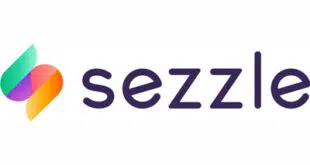Ever since the carrier-billing model for mobile payments found a foothold in the digital-goods market several years ago, processors have tested various tactics to broaden the range of goods the model could be applied to.
The latest example is San Francisco-based Boku Inc. and its announcement Thursday that it will process magazine subscriptions for IPC Media Ltd., a London-based publisher of some 72 titles. Boku will start with four magazines—Ideal Home, InStyle, Marie Claire, and woman&home—with ambitions to ultimately include all or most of the other IPC properties. “We’re super optimistic about this,” Ray Ramillosa, vice president of marketing at Boku, tells Digital Transactions News.
With Boku’s new service, the magazine will print on one of its pages, such as the table of contents, a box containing a pitch to subscribe, a price, and a text number and short code. Readers who text the short code to the number will have the price of the subscription appear on their next mobile-phone bill. A return text will give the customer a link to a page where they can fill in name, address, and other details.
The service is expected to be quicker and less hassle than the typical blow-in subscription cards found in most consumer magazines. These cards “are a slow process and require a lot of steps for the consumer,” says Ramillosa, a former Visa Inc. executive. “We have a solution where the consumer can take immediate action while reading the magazine where they are on the spot, and the publisher gets the information immediately.”
When the new subscriber pays his bill, the mobile network operator takes its cut and passes on the remaining amount to Boku, which deducts its own fee before forwarding the payment to the publisher. Ramillosa refuses to discuss Boku’s fee, but says it is smaller than that of the carrier. Carrier fees, he says range from 10% to 40% these days, down somewhat from the 40%-to-60% range seen several years ago.
While these fees are considerably higher than that for credit and debit cards, the carrier billing option allows merchants to reach consumers who don’t have cards or who are fearful of sharing card details. Boku’s new solution, says Ramillosa, allows publishers to pick up incremental subscribers who otherwise would not have responded to a blow-in card. “It all comes down to our ability to deliver incremental sales,” he says. “The subscriber can do [the transaction] on the spot.”
The new subscriber service also allows Boku to expand further from its long-time base in social networks and games. The 5-year-old company processes transactions on Facebook and also claims Spotify and Sony among its major clients. It has recently moved into the burgeoning market for parking payments, Ramillosa says. “Where we’ve been gaining traction is in moving away from the digital market,” he says.
Another recent venture beyond digital payments, however, has been abandoned. In early 2012, the company introduced a service called Boku Accounts, which represented its first venture into the physical point of sale and its first effort to fund payments by means other than carrier billing. With Boku Accounts, transactions relied on a prepaid card. But Boku discontinued the service later that year, according to Ramillosa, when it realized it had more opportunity with carrier billing.
In the meantime, Boku has built connections to more than 250 mobile operators serving almost 4 billion consumers in 67 countries.
The latest venture into publishing is “a good play,” says Rick Oglesby, a senior analyst for Double Diamond Consulting Group, Centennial, Colo. “It sure is easier than filling out those [blow-in] cards.”
But while Oglesby agrees carrier-billing payments represent a “growth market,” he adds that “it is difficult to step out and become a general payments provider.” Payments funded by carrier billing, he says, are typically limited to low-value goods owing to the operators’ reluctance to assume the risk of high-ticket merchandise.
Oglesby also questions Boku’s reliance on texting and short codes rather than on quick-response codes that could be printed in the magazines. Combined with an app that can scan the codes and a digital wallet, he says, QR codes could prove more streamlined than the Boku solution. “PayPal could do it better,” he says.
For his part, Ramillosa says Boku’s service could work with QR codes but executives in the end felt that texting works just as well, while at the same time not everyone has a QR-code scanner on their mobile device, which means those without the scanner would have to download one. Just about anyone, however, can text, he says.





